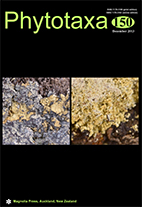Abstract
In order to examine the systematic application of seed-coat characters in Erysimum (Brassicaceae) distributed in Northeast of Iran (Khorassan provinces), the seeds of nine species (14 populations) were examined using the light microscope (LM) and the scanning electron microscope (SEM). According to results of the LM, diagnostic characters at the specific level are seed shape, wing width, epidermal cell-wall shape, and seed-surface sculpture. The SEM investigation at high magnifications reveals that seven types of seed-surface sculpture pattern are distinguishable, including 1) reticulate, the basic type; 2) ocellate; 3) papillate; 4) reticulate-papillate; 5) scalariform; 6) ribbed; and 7) reticulate-ocellate. The seed coat typically consists of four layers, including the epidermis layer, the subepidermis layer, the sclerotic (or palisade) layer, and the parenchymatous layer. Some of the layers may be absent in some species. Finally, an identification key to the investigated taxa is provided based on the seed-coat characters used in this research.

